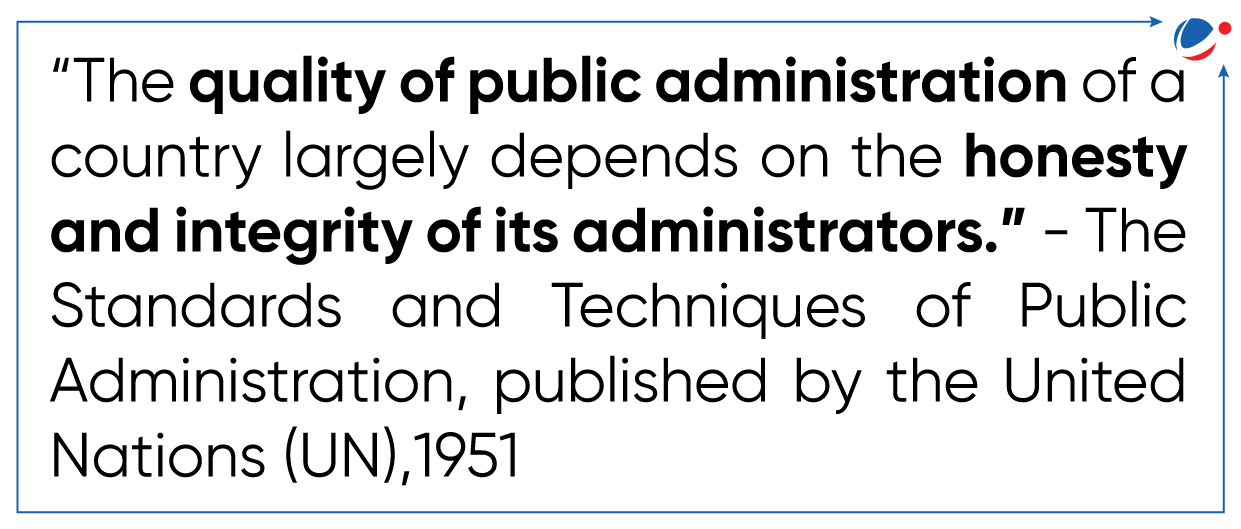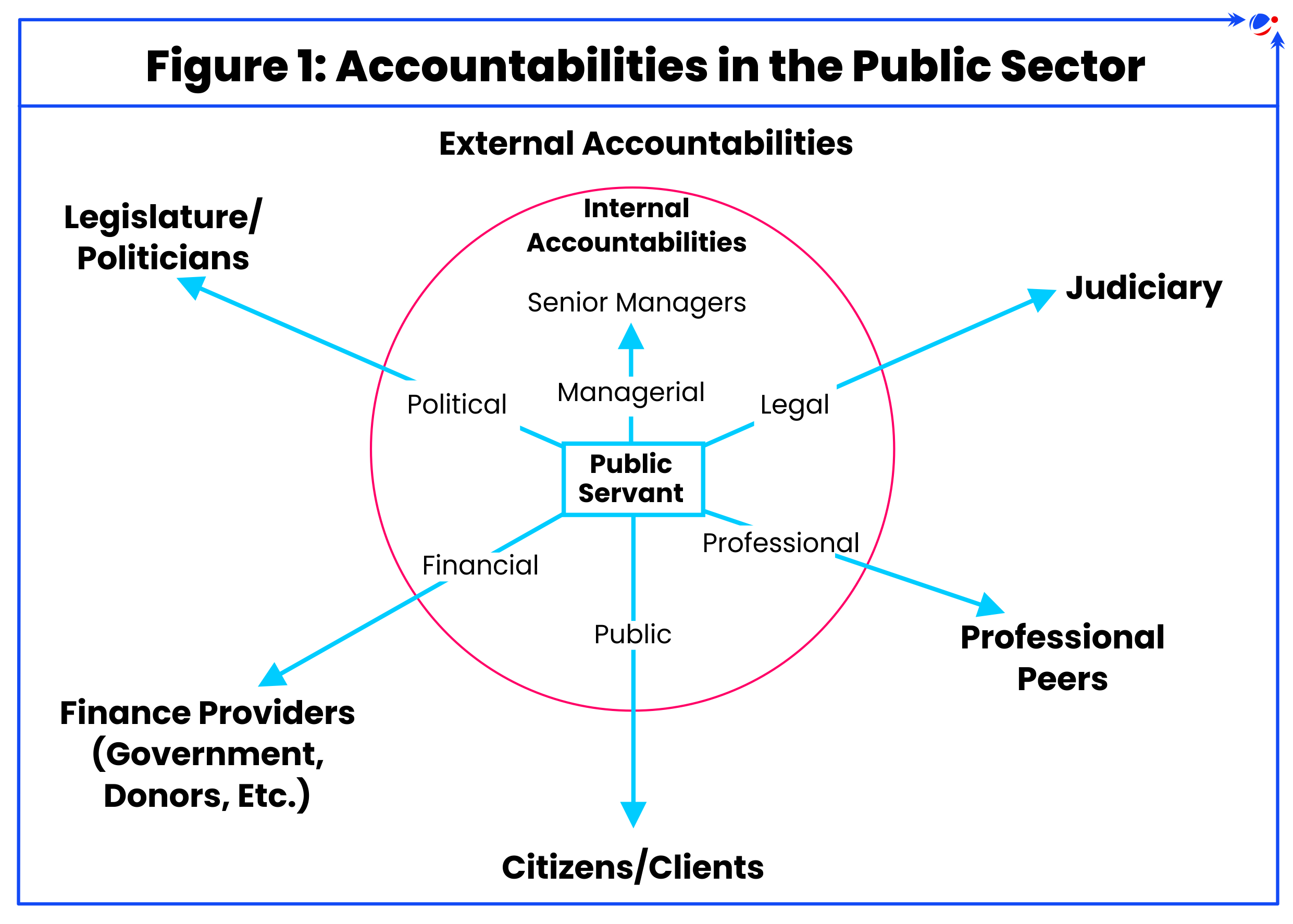Introduction
Recently, more than 15 bridges have collapsed in Bihar, around 15 engineers were suspended for negligence and ineffective monitoring. Previous incidences of failure of public infrastructure like the Morbi bridge collapse in Gujrat (2022), airport roof collapses at Delhi, Rajkot and Jabalpur and railway collision of Kanchanjunga Express with a container freight train have resulted in loss of lives and property. These incidences highlight the compromised quality of public infrastructure and failure of government in ensuring quality public service delivery.
Public service delivery
- In line with the social contract theory, the government is charged with the responsibility of provision of various public services to the citizens.
- Public Service Delivery is the mechanism through which public services are delivered to the public by local, municipal, or federal governments. E.g. Sewage and trash disposal, public education, and health services.
- It acts as a tangible link between government and citizens and promotes national values among citizens.

- Significance:
- Economic Growth: quality public service delivery helps in poverty alleviation, human capital formation and eliminating corruption.
- Ensure equitable distribution of resources: It helps reduce inequalities stemming from gender, caste etc. E.g. Targeted service delivery with TPDS to ensure food security.

Ethical Issues in the governance of infrastructure development
- Inefficient administrative machinery: It acts as an obstacle to effective implementation of development plans. E.g. negligence of responsibility
- Policy issues: Quality of service delivery is neglected. Rather focus is on doing the bare minimum to complete the duty assigned.
- L1 contract method (lowest bidder wins): prioritizes cost over quality and safety.
- Corruption: Misuse of discretion by the public officials leads to creation of a nexus between officials, contractors and other stakeholders involved.
- Lack of probity: Mechanism for fixing accountability and ensuring transparency are either absent or not effectively implemented. Public servants recuse from the responsibility of ensuring quality service delivery.
- E.g., Delhi floods caused by jammed gates of Yamuna barrage- lack of maintenance due to multiple authorities involved and lack of fixed accountability.
- Attitudinal issues like indifference, lack of motivation for striving for excellence.
Ethical issues involved in public service delivery
- Lack of Professional ethics: Public servants often lack the managerial skills to ensure effective service delivery.
- Lack of a 'public service' attitude: Public servants prioritizing personal gains over their public duty and responsibility.
- The social status of a public servant leads to problems like patronage, favouritism etc.
- Corruption: Unethical usage of power and discretion. E.g. Leakages in PDS distribution, inclusion and exclusion errors in schemes.
- Accountability and transparency: Lack of just and fair treatment of malafide errors weakens deterrence towards corrupt practices.
ARC Seven Step Model for Citizen Centricity (2nd Administrative Reforms Committee)
Case Studies
|
Why are issues persistent in public service delivery?
- Lack of effective implementation of various service improvement systems, including rules and regulations for civil servants.
- Rigidity in the administration: Resistance of administration to reforms and change.
- Political constraints: Political interests prioritized above public interest hinder equitable public service delivery.
- Neglect of reforms for ethical grassroot bureaucracy: Most reforms and changes cater to administrative reforms at higher levels of bureaucracy.
Measures to ensure Good Governance
- Administrative reforms: Measures like Citizen's Charter, a responsive grievance redressal mechanism and fixing accountability of every public servant.
- New Public Management (NPM): It involves the adoption of efficient practices from the private sector to apply in the public sector. (See Box)
- Human capital development: Recruitment and training of capable public servants and inculcating ethical values of public service. E.g. Mission Karmayogi
- Sensitization of the grassroot bureaucracy as they are the direct link to public service delivery to the citizens
- E-governance: Optimal adoption of technology to improve quality of public service delivery, efficient utilization of public funds and ease of access to services for the citizens.
- E.g. SMART (Simple, Moral, Accountable, Responsive and Transparent) governance, 'Aaple Sarkar' App of Maharashtra.
- Monitoring project implementation: Regular audits at multiple levels ensure elimination of errors like faulty design, material usage, whereas ensures accountability of public servants.
- E.g. ICT-based, multi-modal platform for Pro-Active Governance and Timely Implementation (PRAGATI).
Characteristics of New Public Management (NPM)
|
Conclusion
In the fast-changing world, the role of the government has increased, particularly in the provision of service delivery. The governance structure needs to evolve from a monolithic bureaucratic hierarchy towards multi-level institutions that interpenetrate civil society and minimize the gap between government and the citizens.
Check your Ethical AptitudeYou are a SDM of a district with high rate of poverty. You are in charge of overseeing the implementation of the food distribution program. On analysis of the program implementation through site visits, it was seen in X village that the Sarpanch of the village appropriated the free grains allotted for the program. Households from the lower caste community were provided only half of the allotted grains. The Sarpanch is in good books with the DM and the MP of the district. Based on the above case, answer the following questions:
|




